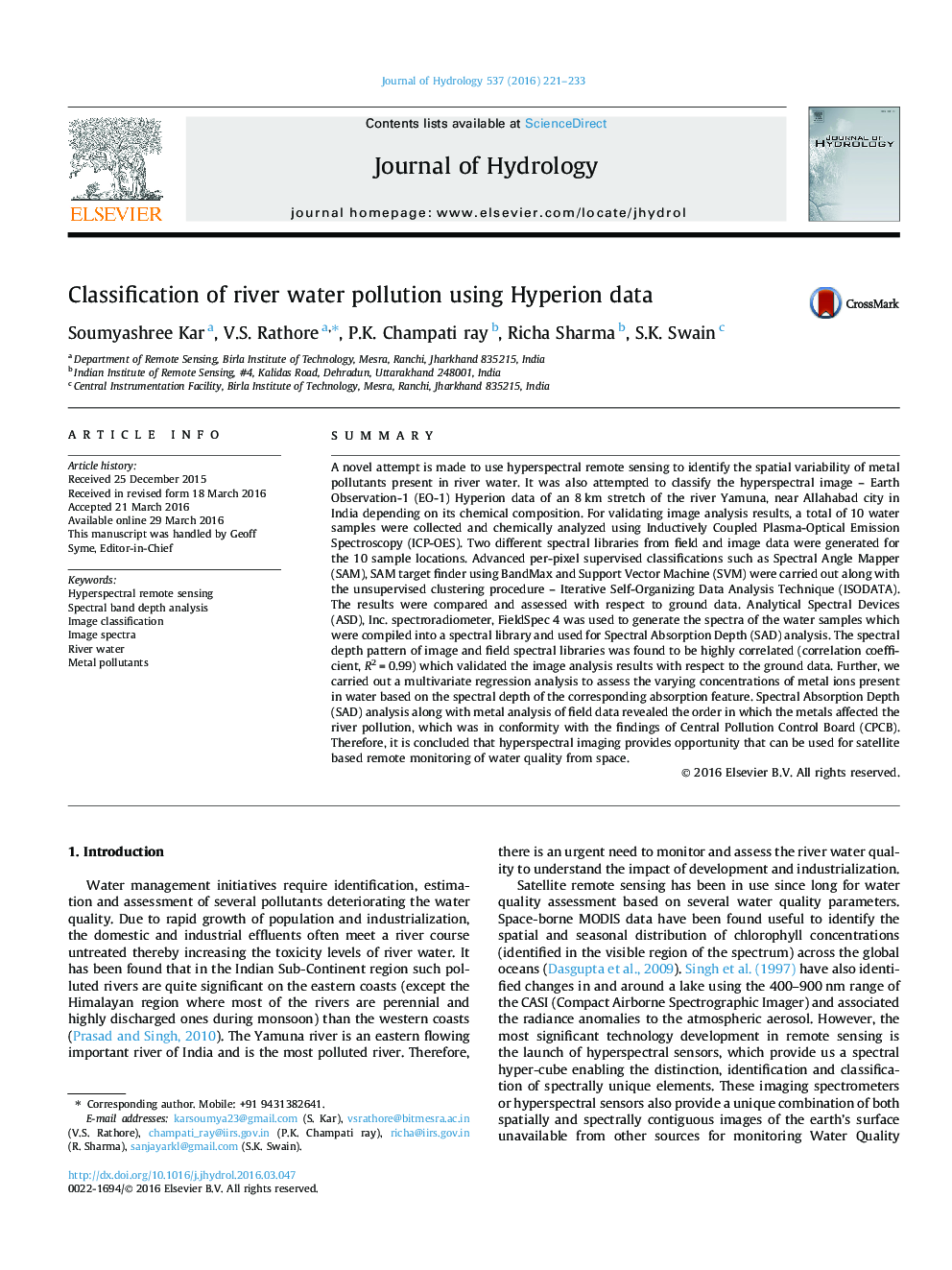| Article ID | Journal | Published Year | Pages | File Type |
|---|---|---|---|---|
| 6409796 | Journal of Hydrology | 2016 | 13 Pages |
â¢Hyperspectral image spectra of river water surface were exploited beyond VNIR region for detecting chemical pollutants.â¢The presence of heavy metals - Fe, As, Cd and Pb were detected in the river water.â¢River water surface was classified as per proportion of chemical pollutants.â¢SVM classifier results matched well with that of ISODATA in classifying homogenous river water surface.â¢Absorption feature's band depth was found directly proportional to the concentration of absorbing material.
SummaryA novel attempt is made to use hyperspectral remote sensing to identify the spatial variability of metal pollutants present in river water. It was also attempted to classify the hyperspectral image - Earth Observation-1 (EO-1) Hyperion data of an 8Â km stretch of the river Yamuna, near Allahabad city in India depending on its chemical composition. For validating image analysis results, a total of 10 water samples were collected and chemically analyzed using Inductively Coupled Plasma-Optical Emission Spectroscopy (ICP-OES). Two different spectral libraries from field and image data were generated for the 10 sample locations. Advanced per-pixel supervised classifications such as Spectral Angle Mapper (SAM), SAM target finder using BandMax and Support Vector Machine (SVM) were carried out along with the unsupervised clustering procedure - Iterative Self-Organizing Data Analysis Technique (ISODATA). The results were compared and assessed with respect to ground data. Analytical Spectral Devices (ASD), Inc. spectroradiometer, FieldSpec 4 was used to generate the spectra of the water samples which were compiled into a spectral library and used for Spectral Absorption Depth (SAD) analysis. The spectral depth pattern of image and field spectral libraries was found to be highly correlated (correlation coefficient, R2Â =Â 0.99) which validated the image analysis results with respect to the ground data. Further, we carried out a multivariate regression analysis to assess the varying concentrations of metal ions present in water based on the spectral depth of the corresponding absorption feature. Spectral Absorption Depth (SAD) analysis along with metal analysis of field data revealed the order in which the metals affected the river pollution, which was in conformity with the findings of Central Pollution Control Board (CPCB). Therefore, it is concluded that hyperspectral imaging provides opportunity that can be used for satellite based remote monitoring of water quality from space.
